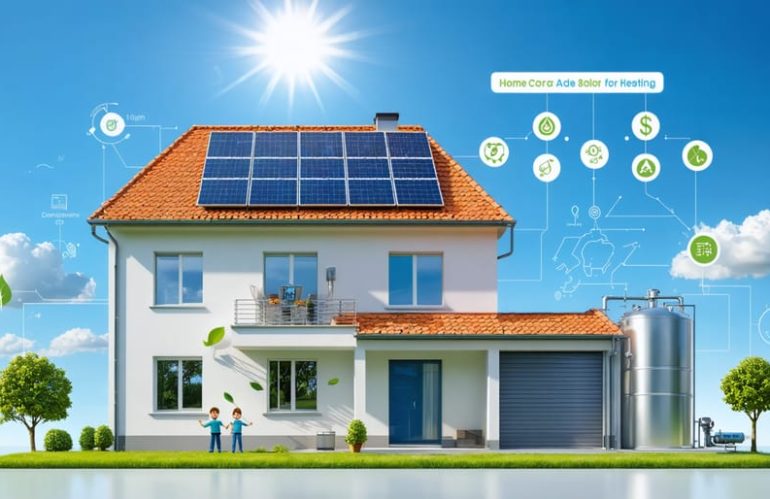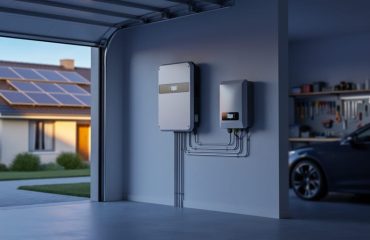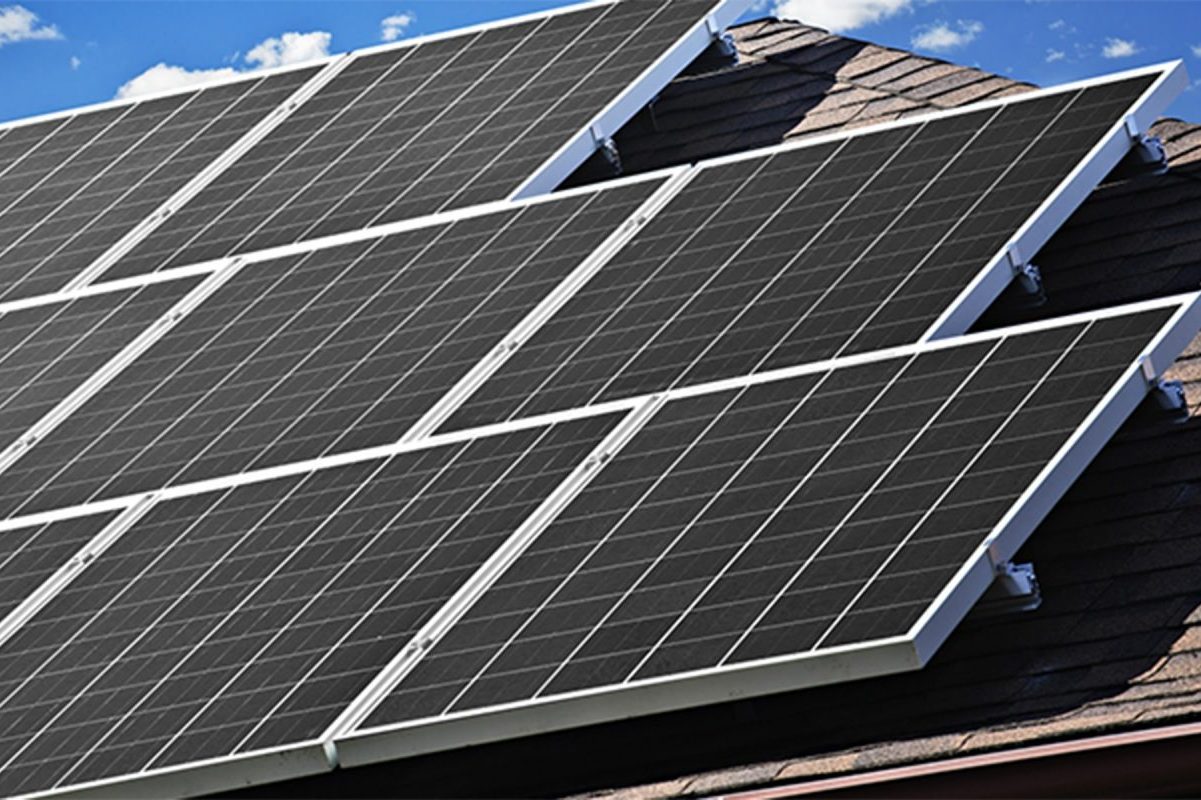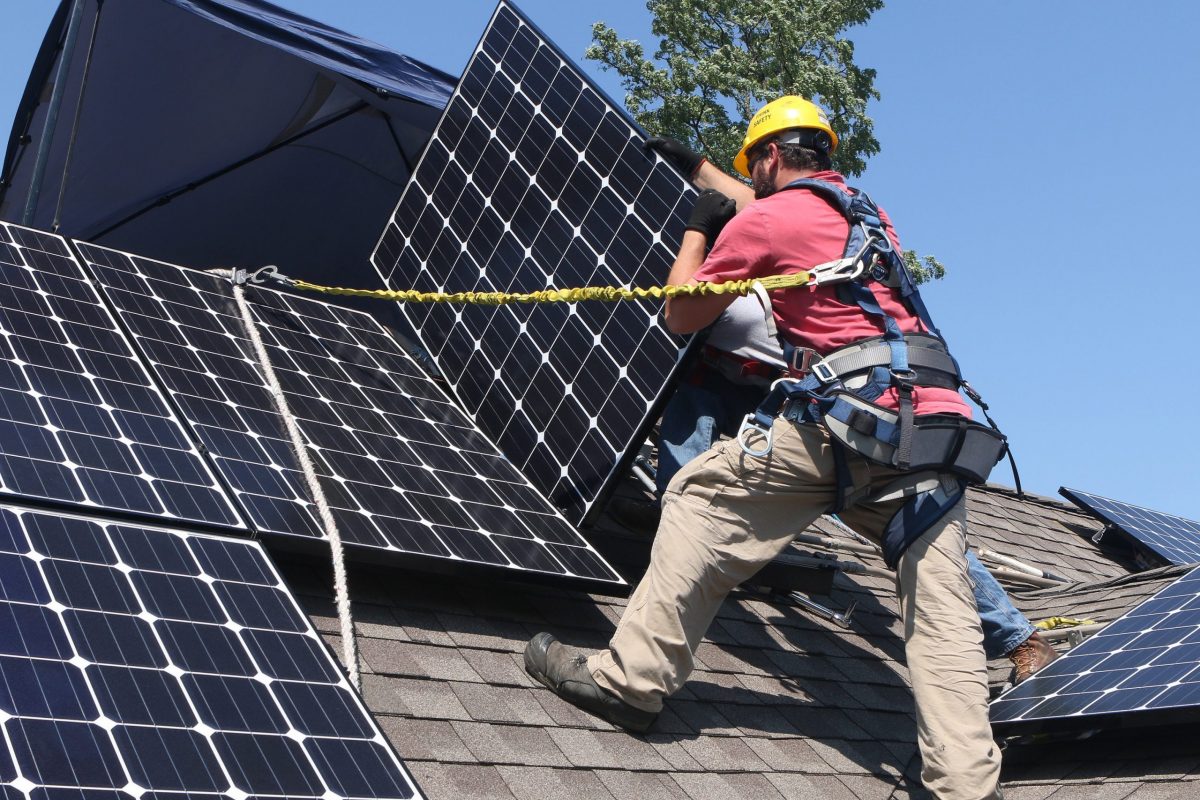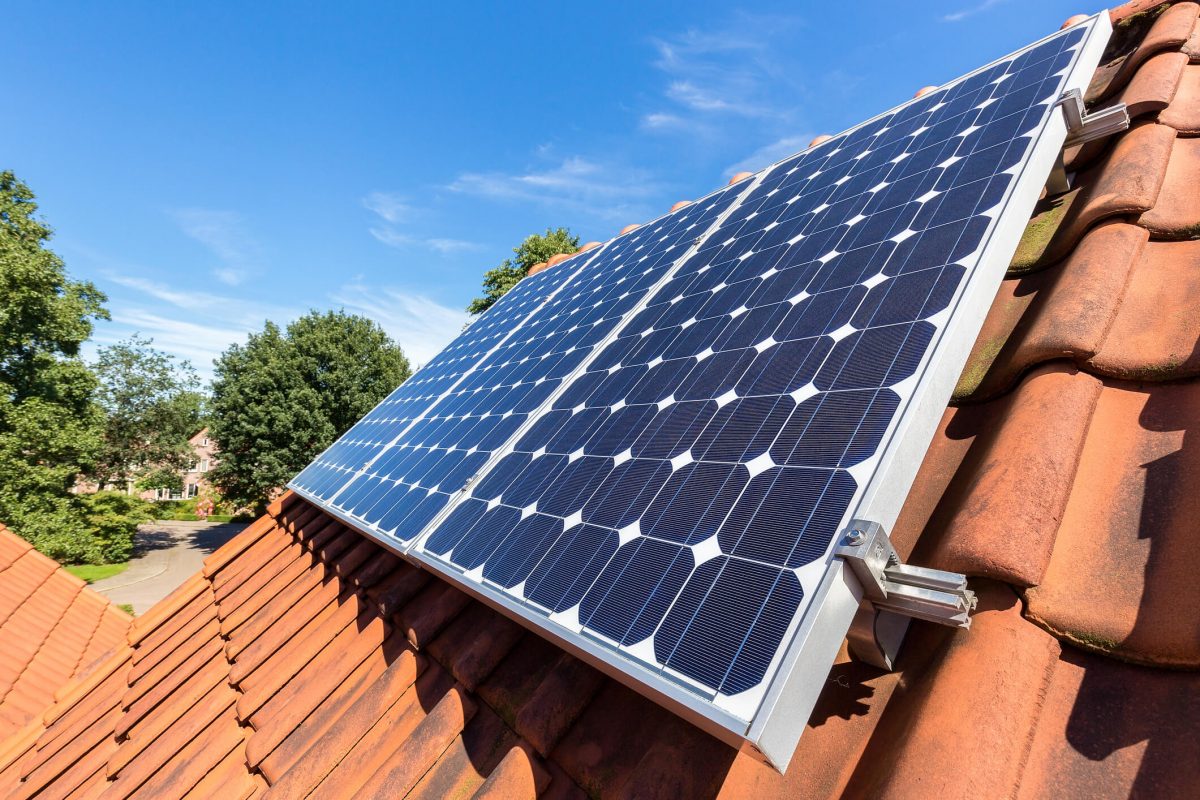Transform your home into an energy-efficient sanctuary with a solar water heating system that slashes utility bills while protecting the environment. Modern solar water systems integrate seamlessly with existing home energy management solutions, delivering year-round hot water through innovative thermal collection technology.
Today’s solar water heaters combine roof-mounted collectors, insulated storage tanks, and smart controllers to capture free solar energy and convert it into reliable hot water for your household. These systems can reduce water heating costs by up to 80% while increasing your property value and reducing your carbon footprint.
Whether you’re building a new home or upgrading your existing water heating system, solar technology offers a proven solution that pays for itself through energy savings. With federal tax incentives, improved system efficiency, and dropping installation costs, there’s never been a better time to harness the sun’s power for your daily hot water needs.
How Solar Water Systems Transform Your Home’s Efficiency
Core Components That Make It Work
A solar water system relies on three main components working together seamlessly to heat your home’s water supply efficiently. The solar collectors, typically mounted on your roof, are the heart of the system. These panels capture sunlight and convert it into heat energy, working most effectively when positioned to receive maximum sun exposure throughout the day.
The storage tank is your system’s reservoir, keeping water hot and ready for use. Modern tanks feature excellent insulation to maintain water temperature, reducing heat loss and ensuring hot water availability even during cloudy days or at night. Many homeowners opt for a dual-tank setup, with one tank dedicated to solar-heated water and another serving as a backup with conventional heating.
The system controller acts as the brain, managing water flow and temperature. This smart component monitors tank temperature and adjusts circulation as needed, preventing overheating while ensuring optimal performance. It also activates your backup heating system automatically when solar energy isn’t sufficient, providing seamless operation year-round.
Additional components include circulation pumps, temperature sensors, and heat exchangers, all working together to deliver reliable hot water while maximizing energy savings.
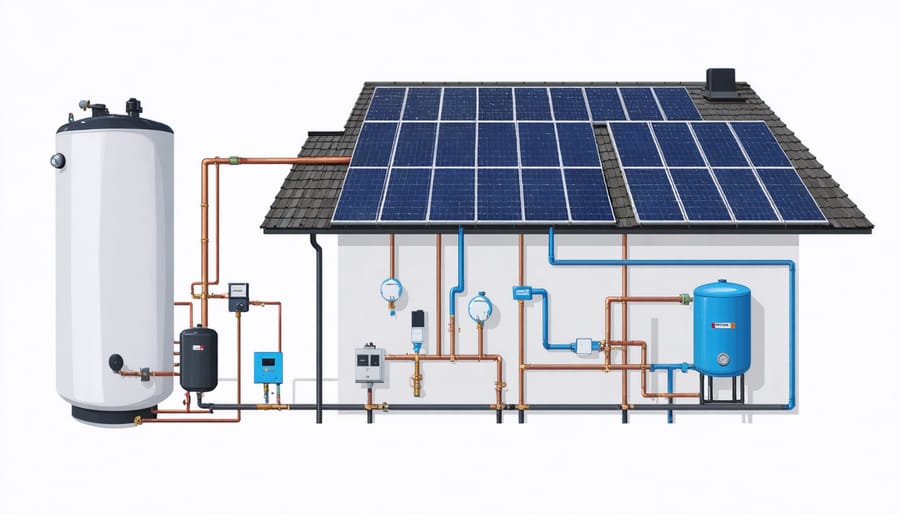
Smart Integration Features
Modern solar water systems come equipped with intelligent features that make monitoring and managing your system effortless. Through user-friendly smartphone apps, you can track your system’s performance, water temperature, and energy savings in real-time. These apps provide detailed insights into your usage patterns and system efficiency, helping you optimize your energy consumption.
The integration of smart automation capabilities allows your solar water system to adapt to your household’s routines. For example, the system can automatically adjust heating schedules based on your family’s hot water usage patterns or weather forecasts, ensuring hot water is available when needed while maximizing energy efficiency.
Many systems now feature leak detection and automated shutdown mechanisms, protecting your home from potential water damage. Remote troubleshooting capabilities allow technicians to diagnose issues without an initial site visit, saving you time and money on maintenance. Some advanced systems even integrate with other smart home devices, creating a comprehensive energy management solution that helps you achieve optimal efficiency and comfort while reducing your environmental impact.
Real Benefits for Your Home and Wallet
Energy Bill Reduction
Installing a solar water heating system can significantly reduce your monthly energy bills. The average family of four typically spends $400-600 annually on water heating alone, but with a solar system, you can cut these costs by 50-80%. Let’s break down the potential savings:
For a household using 64 gallons of hot water daily, switching to solar can save approximately $280-480 per year, depending on your current energy rates and location. In sunnier regions, savings can be even higher, reaching up to $600 annually.
Here’s a practical example: If your current electric water heater costs $50 per month to operate, a solar water system could reduce this to just $10-15, resulting in annual savings of $420-480. Over a 20-year system lifespan, this amounts to $8,400-9,600 in total savings, not accounting for rising energy costs.
The savings are particularly impressive in areas with high electricity rates. For instance, in Hawaii, where electricity costs average $0.33 per kilowatt-hour, homeowners can save up to $1,000 annually by switching to solar water heating.
While the initial investment ranges from $3,000-8,000, federal tax credits, state incentives, and utility rebates can reduce this cost by 30% or more. Most systems pay for themselves within 4-8 years, making them an excellent long-term investment for reducing both energy bills and carbon footprint.
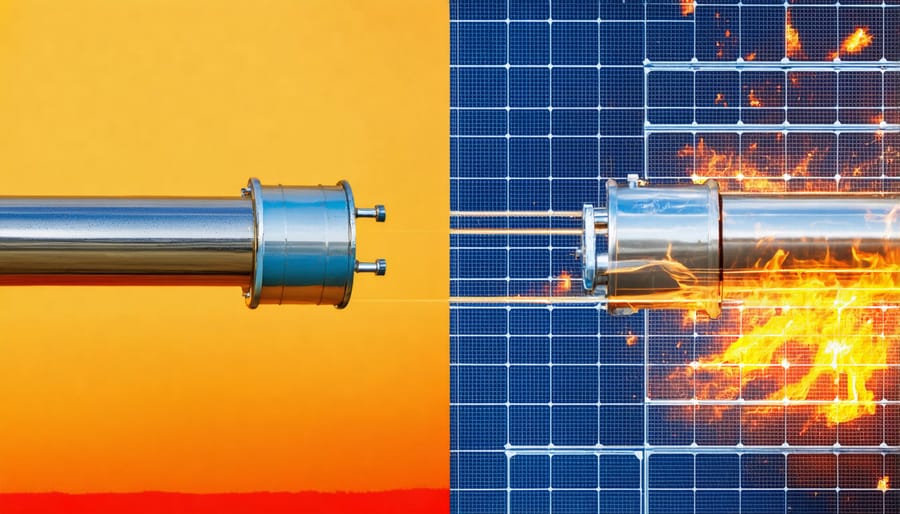
Environmental Impact
Installing a solar water heating system in your home can significantly reduce your environmental footprint. The average household using a solar water heater prevents about 2.5 tons of carbon dioxide emissions annually – equivalent to taking a car off the road for six months. This reduction in greenhouse gas emissions helps combat climate change while preserving natural resources.
When you switch from a conventional water heater to a solar system, you’re reducing your reliance on fossil fuels. A typical family of four using a solar water heater can avoid burning 240 gallons of oil or 4,000 pounds of natural gas each year. This transition not only helps protect our planet’s finite resources but also reduces air pollution and improves local air quality.
Solar water heaters are incredibly efficient, converting up to 80% of available sunlight into usable heat energy. This efficiency far surpasses traditional water heating methods and minimizes waste energy. Additionally, most solar water heating systems have a lifespan of 20-30 years, reducing the environmental impact associated with manufacturing and disposing of multiple conventional water heaters.
The environmental benefits extend beyond carbon reduction. By using solar energy, you’re helping decrease water pollution from coal mining and natural gas extraction. You’re also contributing to reduced demand for power plant cooling water, which helps preserve local water resources.
Installation and Setup Made Simple
Planning Your System
Planning a solar water system for your home starts with a thorough assessment of your household’s hot water needs. Begin by calculating your daily hot water consumption – consider how many people live in your home, their shower habits, and your typical appliance usage. A family of four typically uses 60-80 gallons of hot water per day.
Next, evaluate your home’s solar potential. Check your roof’s orientation – south-facing surfaces in the Northern Hemisphere receive the most sunlight. Ensure there’s minimal shade from trees or nearby buildings, and confirm your roof can support the system’s weight. Most residential installations require 40-100 square feet of collector area.
Consider your climate zone and local weather patterns. Areas with frequent cloudy days may need larger systems or hybrid solutions. Your location also affects the type of system you’ll need – active systems work better in cold climates, while passive systems are ideal for warmer regions.
Choose between different system types based on your budget and needs. Direct systems are simpler and less expensive but work best in warm climates. Indirect systems offer better freeze protection but cost more initially. For backup during cloudy periods, decide whether you want to maintain your existing water heater or install a tankless system.
Finally, check local building codes and HOA restrictions before proceeding with your plan. Many areas offer incentives for solar installations, so research available tax credits and rebates to optimize your investment.
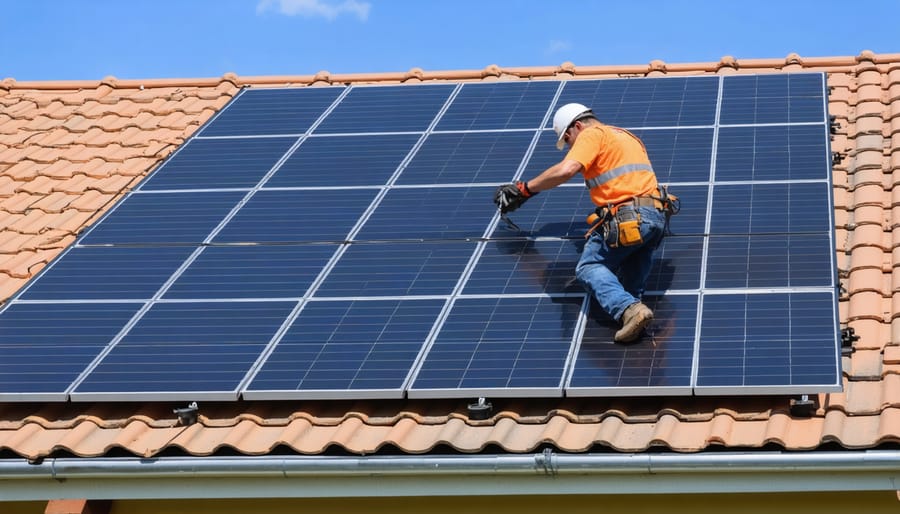
Professional vs DIY Installation
When it comes to installing a solar water system, homeowners have two main options: professional installation or DIY. Each approach has its own set of advantages and considerations worth weighing.
Professional installation offers peace of mind through expert knowledge and experience. Certified installers understand local building codes, ensure proper system sizing, and typically provide warranties on both parts and labor. They handle all necessary permits and inspections, saving you time and potential headaches. While this option costs more upfront, it often results in optimal system performance and reduced risk of installation errors.
DIY installation can significantly reduce initial costs, sometimes by up to 50%. It’s particularly appealing for those with technical skills and basic plumbing knowledge. However, this route requires careful research, planning, and dedication to safety protocols. You’ll need to thoroughly understand system components, proper tool usage, and local regulations.
Consider these factors when deciding:
– Technical expertise required
– Time commitment
– Access to proper tools
– Local building codes
– Warranty requirements
– Insurance considerations
– Physical ability to work at heights
– Comfort level with plumbing
For most homeowners, professional installation proves to be the safer, more reliable choice. However, if you’re experienced with home improvement projects and willing to invest time in learning, a DIY approach could be rewarding both financially and personally. Whatever you choose, ensure your decision aligns with your skills, budget, and comfort level.
Maintenance and Optimization Tips
Regular Maintenance Schedule
To keep your solar water system running efficiently, follow these simple maintenance tasks throughout the year:
Monthly:
• Check system pressure gauge readings
• Inspect pipes and connections for leaks
• Clean solar collector glass surfaces
• Monitor temperature readings
Quarterly:
• Test pressure relief valve
• Check antifreeze levels (closed-loop systems)
• Inspect insulation on pipes
• Clean debris from collector area
Annually:
• Professional inspection of all components
• Replace anode rod if necessary
• Flush the storage tank
• Check heat exchanger efficiency
• Verify controller settings
• Test backup heating elements
Every 3-5 Years:
• Replace glycol in closed-loop systems
• Check collector mounting hardware
• Professional assessment of system efficiency
Regular maintenance helps prevent costly repairs and extends system life. Schedule professional inspections during spring or fall for optimal performance. Keep a maintenance log to track system performance and identify potential issues early. Most tasks take just minutes but can save hours of troubleshooting later.
Remember: If you notice unusual changes in water temperature or pressure, contact a qualified technician immediately.
Performance Monitoring
Regular monitoring of your solar water system’s performance is crucial for maintaining optimal efficiency and catching potential issues early. Start by tracking system efficiency through your smart monitoring device or control panel, which typically displays water temperature, energy production, and usage patterns.
Keep a monthly log of your energy savings and water heating performance, particularly during different seasons. Watch for unusual changes in water temperature or heating times, as these can indicate maintenance needs. Many modern systems come with smartphone apps that provide real-time data and alerts.
Check your solar collector’s exposure regularly, ensuring no new shade patterns from growing trees or neighboring structures are affecting performance. Monitor pressure gauges and temperature readings weekly, and compare them against the manufacturer’s recommended ranges.
To optimize performance, adjust your water usage patterns to align with peak solar hours, typically between 10 AM and 4 PM. Consider setting your backup heater’s temperature slightly lower to maximize solar contribution while maintaining comfort levels.
Future-Proofing Your Investment
Investing in a solar water system is just the beginning of your journey toward sustainable living. To truly maximize your solar investment, consider the potential for future upgrades and emerging technologies that can enhance your system’s performance.
Modern solar water heaters are designed with modularity in mind, allowing for easy integration of new components as technology advances. Keep an eye on developments in heat pump technology, smart monitoring systems, and improved storage solutions that can be incorporated into your existing setup.
The rise of smart home technology presents exciting opportunities for optimization. Many manufacturers now offer Wi-Fi-enabled controllers that allow you to monitor and adjust your system’s performance from your smartphone. These smart features can help you track energy savings and identify maintenance needs before they become issues.
Consider planning for potential expansion of your system. If you’re starting with a basic setup, ensure your installation includes provisions for adding more collectors or storage capacity in the future. This forward-thinking approach can save you money and hassle down the line.
Energy storage technology is rapidly evolving, with new materials and methods for maintaining water temperature more efficiently. By staying informed about these developments, you can make strategic upgrades that enhance your system’s performance and extend its lifespan, ensuring decades of reliable service and continued energy savings.
Installing a solar water system in your home is a smart investment that pays dividends both for your wallet and the environment. By harnessing the sun’s free energy, you can significantly reduce your monthly utility bills while decreasing your carbon footprint. As we’ve explored throughout this article, these systems are becoming increasingly affordable, efficient, and user-friendly, making them an attractive option for environmentally conscious homeowners.
Remember that while the initial investment may seem substantial, the long-term savings on energy costs, potential tax incentives, and increased property value make solar water heating systems a worthwhile consideration. With proper maintenance and care, your system can provide reliable hot water for 15-20 years or more.
Taking the next step is easier than you might think. Start by assessing your home’s solar potential, consulting with certified installers, and reviewing available incentives in your area. Many manufacturers and installers offer free consultations and can help you choose the right system size for your household’s needs.
By making the switch to solar water heating, you’re not just investing in your home – you’re contributing to a more sustainable future. Whether your primary motivation is environmental stewardship or financial savings, a solar water system represents a practical and powerful way to make a positive impact while enjoying the benefits of renewable energy in your daily life.

